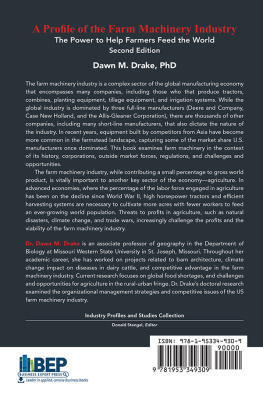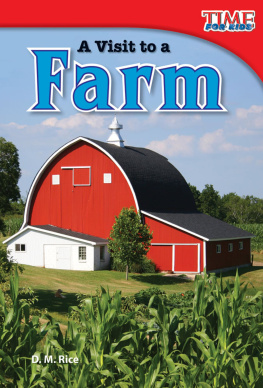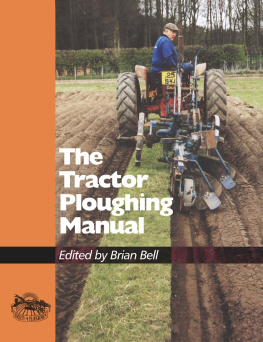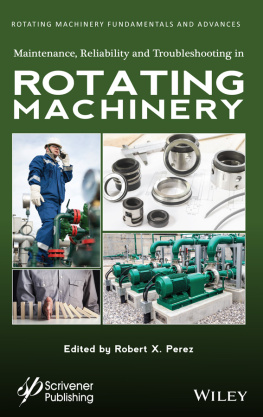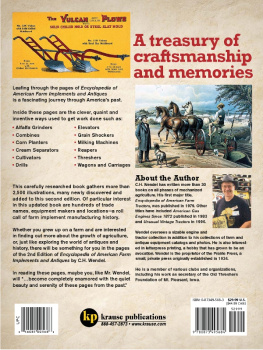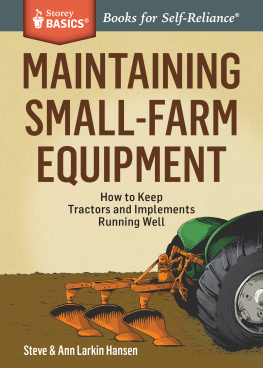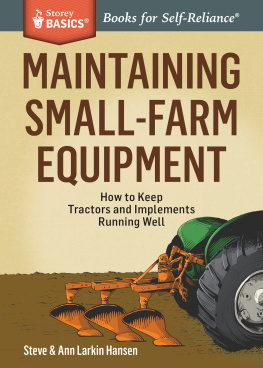A Profile of the Farm
Machinery Industry
A Profile of the Farm
Machinery Industry
The Power to Help Farmers Feed the World
Second Edition
Dawn M. Drake

A Profile of the Farm Machinery Industry:
The Power to Help Farmers Feed the World, Second Edition
Copyright Business Expert Press, LLC, 2021.
All rights reserved. No part of this publication may be reproduced, stored in a retrieval system, or transmitted in any form or by any meanselectronic, mechanical, photocopy, recording, or any other except for brief quotations, not to exceed 250 words, without the prior permission of the publisher.
First published in 2021 by
Business Expert Press, LLC
222 East 46th Street, New York, NY 10017
www.businessexpertpress.com
ISBN-13: 978-1-95334-930-9 (paperback)
ISBN-13: 978-1-95334-931-6 (e-book)
Business Expert Press Industry Profiles and Studies Collection
Collection ISSN: 2331-0065 (print)
Collection ISSN: 2331-0073 (electronic)
Cover and interior design by S4Carlisle Publishing Services Private Ltd., Chennai, India
First edition: 2014
Second edition: 2021
10 9 8 7 6 5 4 3 2 1
Printed in the United States of America.
Abstract
The farm machinery industry is a complex sector of the global manufacturing economy that encompasses many companies, including those that produce tractors, combines, sprayers, planting equipment, harvesters, tillage equipment, and irrigation systems. While the global industry is dominated by three full-line manufacturers (Deere and Company, Case New Holland, and the Allis-Gleaner Corporation), there are thousands of other companies, including many short-line manufacturers, that also dictate the nature of the industry. In recent years, equipment built by competitors from Asia have become more common in the farmstead landscape, capturing some of the market share U.S. manufacturers once dominated. The farm machinery industry, while contributing a small percentage to gross world product, is vitally important to another key sector of the economyagriculture. In advanced economies, where the percentage of the labor force engaged in agriculture has been on the decline since World War II, high-horsepower tractors and efficient harvesting systems are necessary to cultivate more acres with fewer workers to feed an ever-growing world population. Threats to profits in agriculture, such as natural disasters, climate change, and trade wars, increasingly challenge the profits and the viability of the farm machinery industry.
Keywords
farm machinery; agriculture; tractor; combine; implement; trade policy
Contents
In producing the second edition of this book, I feel compelled to again thank those who made this project possible from the beginning. This includes funding agencies like the University of Tennessee and the Government of Canada, but also the archival librarians, trade show workers, and manufacturing plant managers who were willing to spend time with me and answer my questions. It also includes my academic mentors, Dr. Ron Kalafsky and Dr. Thomas Bell, at the University of Tennessee.
The second edition of this book required additional time and funding for research and writing. For providing that, I would like to thank my colleagues at Missouri Western State University for covering my classes, listening to me talk when they did not know what I was really talking about, and also for the travel funding the university provided for me to attend trade shows. I am also grateful to Dr. Thomas Bell and Dr. Margaret Gripshover for providing a home away from home during my research. As a stand-alone geographer at Missouri Western, I also need to thank my geography colleagues far and wide who have encouraged me through this process and listened to my complaints when I had nowhere else to turn. I especially am grateful for the friendship of Dr. Darren Purcell at the University of Oklahoma, Dr. Jonathan Leib at Old Dominion University, and Dr. Chris Laingen at Eastern Illinois University.
I also want to acknowledge my family and friends. Had my mother never forced my father to find a hobby, which turned out to be collecting antique tractors, I probably would not have had an interest in this topic. Had that hobby not encouraged both my father and me to join a local antique farm machinery collectors club, I likely never would have met Gary Fehnel, who, along with his wife and children, helped me learn about the farming industry so that I was not writing the book from an outside perspective. Gary also has never been one to turn down an opportunity to tag along on a research trip to a trade show or plant tour. I am always appreciative of the company. The support of my mother, my friends, and the rest of my family was invaluable throughout my academic career, and without it I would not have made it this far.
Finally, I want to acknowledge those who did not get to see this second edition published. Dr. Ruth Shirey was my professor, my friend, and my advocate before I even knew her personally. I still miss her every day. I also miss my father every day. He was the one who introduced me to this world of farm machinery and for that I will forever be grateful.
1.1 What Is the Farm Machinery Industry?
There are many ways to define the farm machinery industry. The North American Industrial Classification System (NAICS) defines it broadly as any firm that primarily produces equipment for use in commercial agriculture. This equipment includes everything from self-propelled machines such as tractors, combines, sprayers, and windrowers (.

Figure 1.1 Various types of self-propelled farm machinery on display at a trade show. Clockwise from the top left, New Holland tractor, Versatile combine, MacDon rotary disc mower, and Apache sprayer

Figure 1.2 Implements manufactured by the farm machinery industry on display at trade shows. Clockwise from the top left, Great Plains planter, Vermeer round baler, John Deere air seeder, and Sunflower disc
AU: The remaining chapters () have not been mentioned in this chapter/introduction; is that intentional?

Figure 1.3 Other types of farm machinery on display at trade shows. Clockwise from the top left, Kinze grain cart, Reinke irrigation system, Willmar dry fertilizer spreader, and Kuhn feed mixer
In 2019, U.S. farm machinery manufacturers generated $39.3 billion of revenues, which was a continuation of a downward trend over the five years from 2014 to 2019. In 2019 alone, revenues decreased 2 percent and profit margins were expected to decrease proportionately. The low point for the industry came in 2016, when revenues were 40 percent lower than their most recent peak in 2012. Decreases in revenues and profits were driven by low agricultural commodity prices and a strong U.S. dollar that led to reduced international trade of U.S. crops and livestock products. A trade war with China and tariffs on raw materials, such as aluminum and steel, that are critical to the farm machinery industry further reduced profit margins. It is projected that the combination of a lingering trade dispute with China, low commodity prices, continuing weather-related concerns, and the impacts of COVID-19 will drive revenues lower in 2020.

